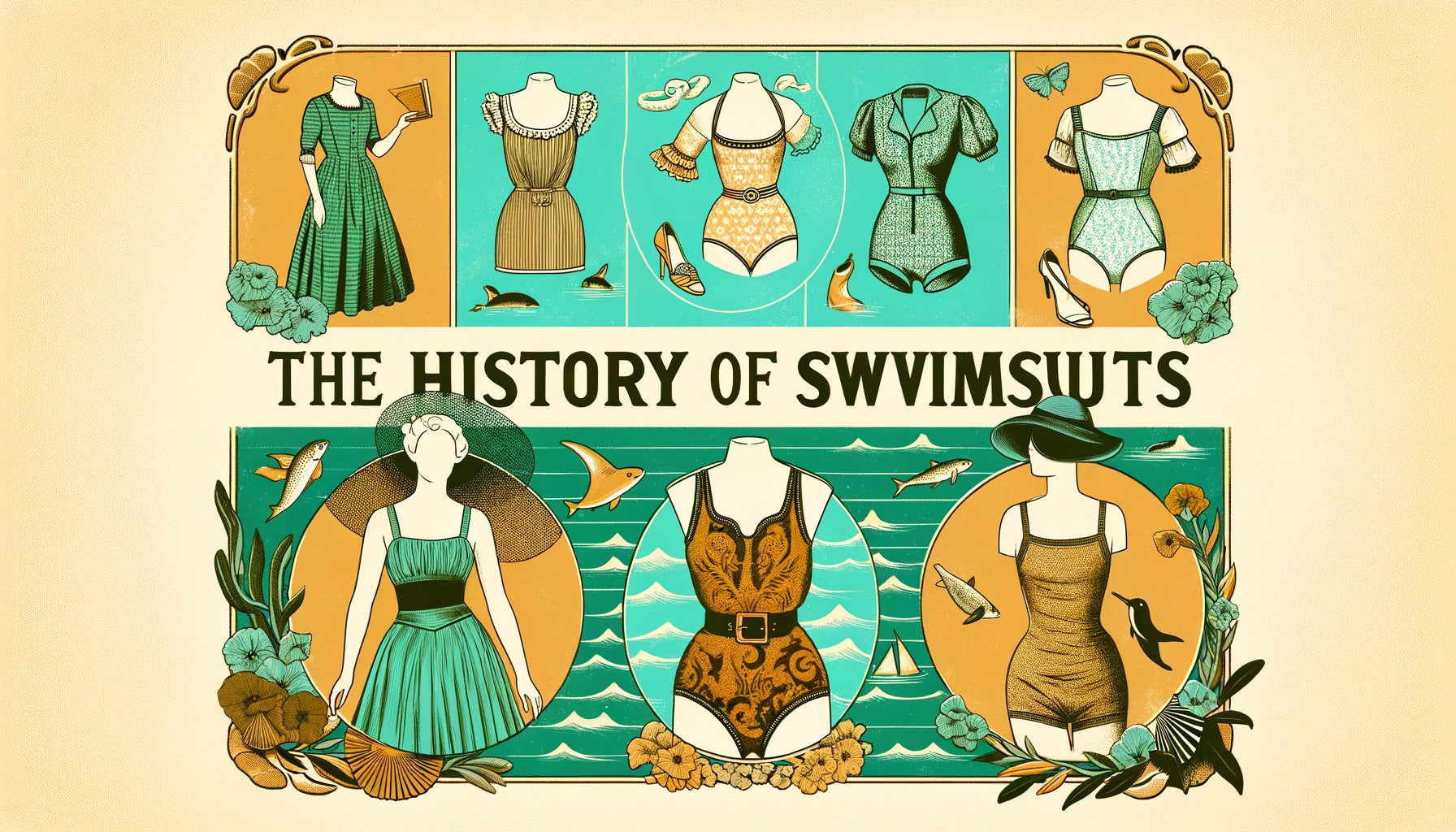Introduction
The swimsuit, an essential garment for aquatic leisure and sports competitions, has undergone a remarkable transformation over the centuries. From its modest beginnings to its current place in fashion, the swimsuit reflects the social, cultural, and technological changes of each era.
The Early Days of Swimsuits
In ancient times, bathing activities were often conducted without specific garments. Greeks and Romans often bathed nude or wore light tunics. In the Middle Ages, public bathing became rare in Europe, and when it did occur, it was usually done in underwear or everyday clothes.
The 19th Century: The Victorian Era and Modesty
The 19th century marked a turning point with the emergence of seaside resorts. Public bathing required specific attire, but modesty was paramount. Women wore long, loose dresses with bloomers underneath, often made of wool to prevent them from becoming transparent when wet. Men wore full-body suits.
The 1920s and 1930s: Towards More Freedom
The 1920s brought a breath of freedom with shorter, more fitted swimsuits. Women began to show more skin with shorter-skirted swimsuits, and men adopted swim briefs. The materials used also became lighter and more comfortable.
The 1940s and 1950s: The Golden Age of the Bikini
In 1946, Louis Réard, a French engineer, revolutionized swimwear by introducing the bikini, a much more revealing two-piece. Named after Bikini Atoll, the site of nuclear tests, this swimsuit caused a scandal but quickly gained popularity, thanks to icons like Brigitte Bardot and Marilyn Monroe.
The 1960s and 1970s: Personal Expression
With the sexual liberation of the 1960s, swimsuits became even bolder. The monokini, consisting of only a swimsuit bottom without a top, made its appearance. The 1970s saw the introduction of synthetic materials like Lycra, allowing for more varied designs and tighter fits.
The 1980s and 1990s: The Influence of Sports
The 1980s popularized high-cut bodysuits and sports-inspired swimsuits influenced by swimming competitions. The 1990s solidified this trend with the rise of sports brands like Speedo and the influence of TV shows like "Baywatch."
The 21st Century: Diversity and Innovation
Today, swimsuits come in a multitude of styles and shapes, ranging from tankinis to trikinis, sophisticated one-piece swimsuits, and minimalist bikinis. Technological advancements have enabled the use of eco-friendly materials and smart fabrics, offering UV protection and hydrodynamic properties.
Conclusion
The evolution of swimsuits reflects not only fashion trends but also changes in societal attitudes towards the body and modesty. From Victorian modesty to the bold designs of the 21st century, swimsuits will continue to evolve, influenced by technological advancements and cultural movements.



Share: